
Dachau was a Nazi concentration camp opened on 22 March 1933, which was initially intended to hold political prisoners. It is located on the grounds of an abandoned munitions factory northeast of the medieval town of Dachau, about 16 km (10 mi) northwest of Munich in the state of Bavaria, in southern Germany. After its opening by Heinrich Himmler, its purpose was enlarged to include forced labor, and, eventually, the imprisonment of Jews, German and Austrian criminals, and finally foreign nationals from countries that Germany occupied or invaded. The Dachau camp system grew to include nearly 100 sub-camps, which were mostly work camps or Arbeitskommandos, and were located throughout southern Germany and Austria. The main camp was liberated by U.S. forces on 29 April 1945.

Fresnes Prison is the second largest prison in France, located in the town of Fresnes, Val-de-Marne South of Paris. It comprises a large men's prison of about 1200 cells, a smaller one for women and a penitentiary hospital.

From 1933 to 1945, Nazi Germany operated more than a thousand concentration camps on its own territory and in parts of German-occupied Europe.
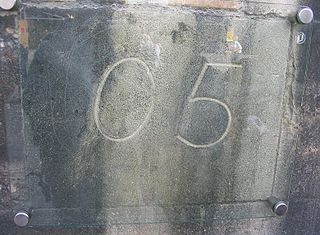
The Austrian resistance launched in response to the rise in fascism across Europe and, more specifically, to the Anschluss in 1938 and resulting occupation of Austria by Germany. An estimated 100,000 people were reported to have participated in this resistance with thousands subsequently imprisoned or executed for their anti-Nazi activities.
Adolf Maislinger was a member of the German Resistance and was a survivor of Dachau concentration camp.

Father Jean Bernard was a Catholic priest from Luxembourg who was imprisoned from May 1941 to August 1942 in the Nazi concentration camp at Dachau. He was released for nine days in February 1942 and allowed to return to Luxembourg, an episode which he later wrote about in his memoirs of the camp and which was turned into a film.
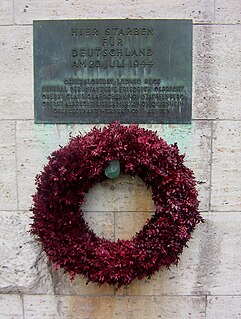
German resistance to Nazism was the opposition by individuals and groups in Germany to the Nazi regime between 1933 and 1945. Most of which engaged in active resistance, including attempts to remove Adolf Hitler from power by assassination or by overthrowing his established regime.

Père (Father) Jacques de Jésus, O.C.D., was a French Roman Catholic priest and Discalced Carmelite friar. While serving as headmaster of a boarding school run by his Order, he took in several Jewish refugees to protect them from the Nazi government of occupation, for which he was arrested and imprisoned in various Nazi concentration camps.
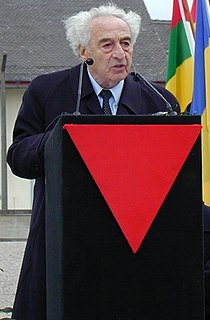
International concentration camp committees are organizations composed of former inmates of the various Nazi concentration camps, formed at various times, primarily after the Second World War. Although most survivors have since died and those who are still alive are generally octogenarians, the committees are still active.

The Postenpflicht was a general order issued to SS-Totenkopfverbände guards in Nazi concentration camps to summarily execute insubordinate prisoners. The order required guards to shoot prisoners who engaged in resistance or escape attempts, without warning; failing to do so would result in dismissal or arrest. The Postenpflicht was originally issued on October 1, 1933, for guards at Dachau concentration camp, but was later extended to other concentration camps.

The Priest Barracks of Dachau Concentration incarcerated clergy who had opposed the Nazi regime of Adolf Hitler. From December 1940, Berlin ordered the transfer of clerical prisoners held at other camps, and Dachau became the centre for imprisonment of clergymen. Of a total of 2,720 clerics recorded as imprisoned at Dachau some 2,579 were Roman Catholics. Among the other denominations, there were 109 Protestants, 22 Greek Orthodox, 8 Old Catholics and Mariavites and 2 Muslims. Members of the Catholic Society of Jesus (Jesuits) were the largest group among the incarcerated clergy at Dachau.
During the German Occupation of Poland (1939–1945), the Nazis brutally suppressed the Catholic Church in Poland, most severely in German-occupied areas of Poland. Thousands of churches and monasteries were systematically closed, seized or destroyed. As a result, many works of religious art and objects were permanently lost.

Otto Neururer was an Austrian Roman Catholic priest and was the first priest to die in a Nazi concentration camp. Neururer did his studies for the priesthood in Brixen before he served as a teacher and pastor in several cities before settling in 1932 in Götzens near Innsbruck. He was arrested in 1938 for attempting to persuade a girl not to be wed to a man of questionable morals and was sent to Dachau before being transferred to Buchenwald where he died after being hanged upside down.
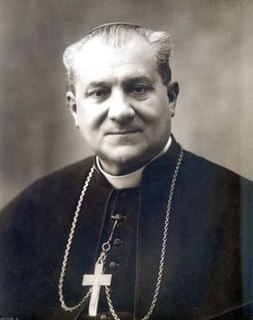
Monsignor Gabriel Piguet was the Roman Catholic Bishop of Clermont-Ferrand, France. Involved in Catholic resistance to Nazism, he was imprisoned in the Priest Barracks of Dachau Concentration Camp in 1944. He has been honoured as a Righteous Gentile by Yad Vashem, Israel's Holocaust Memorial.

Hans Maršálek was an Austrian typesetter, political activist, detective, and historian. A devout socialist and active in the resistance, he was arrested by the Nazis and imprisoned in the Mauthausen concentration camp. After the war, he joined the Austrian political police and was instrumental in tracking down and convicting numerous Nazi criminals. He also became the main chronicler of the camp's history, helped establish the Mauthausen Memorial Museum, and published several books.
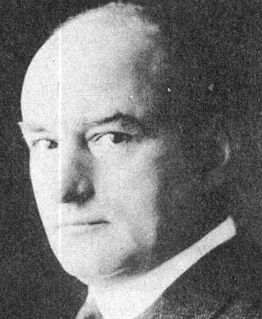
Catholic resistance to Nazi Germany was a component of German resistance to Nazism and of Resistance during World War II. The role of the Church during the Nazi years was always, and remains however, a matter of much contention. Many writers, echoing Klaus Scholder, have concluded, "There was no Catholic resistance in Germany, there were only Catholics who resisted." The Vatican policy meant that the Pope never challenged Catholics to side either with National Socialism or with Catholic morality, and Pius XII was so adamant that Bolshevism represented the most terrible threat to the world that he remarked, 'Germany are a great nation who, in their fight against Bolshevism, are bleeding not only for their friends but also for the sake of their present enemies'. In a letter of autumn 1941 Pius XII wrote to Bishop Preysing, "We emphasise that, because the Church in Germany is dependent upon your public behaviour...in public declarations you are duty bound to exercise restraint" and "requires(d) you and your colleagues not to protest."

The Roman Catholic Church suffered persecution in Nazi Germany. The Nazis claimed jurisdiction over all collective and social activity and the party leadership hoped to dechristianize Germany in the long term. Clergy were watched closely, and frequently denounced, arrested and sent to Nazi concentration camps. Welfare institutions were interfered with or transferred to state control. Catholic schools, press, trade unions, political parties and youth leagues were eradicated. Anti-Catholic propaganda and "morality" trials were staged. Monasteries and convents were targeted for expropriation. Prominent Catholic lay leaders were murdered, and thousands of Catholic activists were arrested.
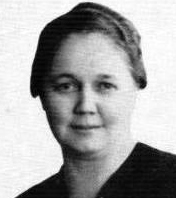
Rosa (Hoffman) Stallbaumer (1897-1942) was a member of the Austrian Resistance during World War II. Her name is one of 124 names of women and men from Tyrol, Austria inscribed on the Liberation Monument at The Eduard-Wallnöfer-Platz in Innsbruck in recognition of both her involvement in resisting National Socialism and of her death at Auschwitz, following her incarceration at that Nazi concentration camp as punishment for helping Jewish targets of Nazi persecution escape to Italy.
Max Troll was a German communist-turned-informer who betrayed hundreds of Bavarian communists to the Bavarian Political Police, a forerunner of the Gestapo, between 1933 and 1936. Troll spent a short time in Dachau concentration camp and served in the German Army during World War II. After the war he was sentenced to ten years in jail for his role as informer and released after five, in contrast to his Gestapo handlers who were not prosecuted.















